This website uses cookies so that we can provide you with the best user experience possible. Cookie information is stored in your browser and performs functions such as recognising you when you return to our website and helping our team to understand which sections of the website you find most interesting and useful.
Your support helps us to tell the story
From reproductive rights to climate change to Big Tech, The Independent is on the ground when the story is developing. Whether it's investigating the financials of Elon Musk's pro-Trump PAC or producing our latest documentary, 'The A Word', which shines a light on the American women fighting for reproductive rights, we know how important it is to parse out the facts from the messaging.
At such a critical moment in US history, we need reporters on the ground. Your donation allows us to keep sending journalists to speak to both sides of the story.
The Independent is trusted by Americans across the entire political spectrum. And unlike many other quality news outlets, we choose not to lock Americans out of our reporting and analysis with paywalls. We believe quality journalism should be available to everyone, paid for by those who can afford it.
Your support makes all the difference.
For destinations the world over, there’s a delicate balance to be struck. Following the pause of tourism during Covid restrictions, many places reliant on visitors were champing at the bit to lure back holidaymakers once travel opened up again. But there are tourists – and then there are too many tourists.
Post-pandemic, the influx of millions of visitors to tourist-strewn towns has, in some cases, risen to levels above those seen in 2019. Too much tourism threatens to disrupt residents and natural ecosystems and contribute to transport pollution.
Unesco has warned of potential damage to protected areas, and Fodor’s “No Travel List” recommended reconsidering a visit to “suffering cultural hotspots” with overstretched infrastructure, such as “plastic apocalypse” Bali, Barcelona and Koh Samui, Thailand, in 2025.
Some destinations themselves have started taking a stand. Italy’s hardened approach to tackling the issue is leading the charge against overtourism in peak season, and countries looking to maintain tradition and encourage sustainability through redirection to low-impact tourism have followed suit.
Bans on cruise ships and short-term holiday rentals such as Airbnb, and caps on visitor numbers are among the ways destinations are trying to get a handle on escalating tourism, alongside championing considerate behaviour.
Here are the destinations cracking down on tourism, from Mallorca to the Galapagos Islands.
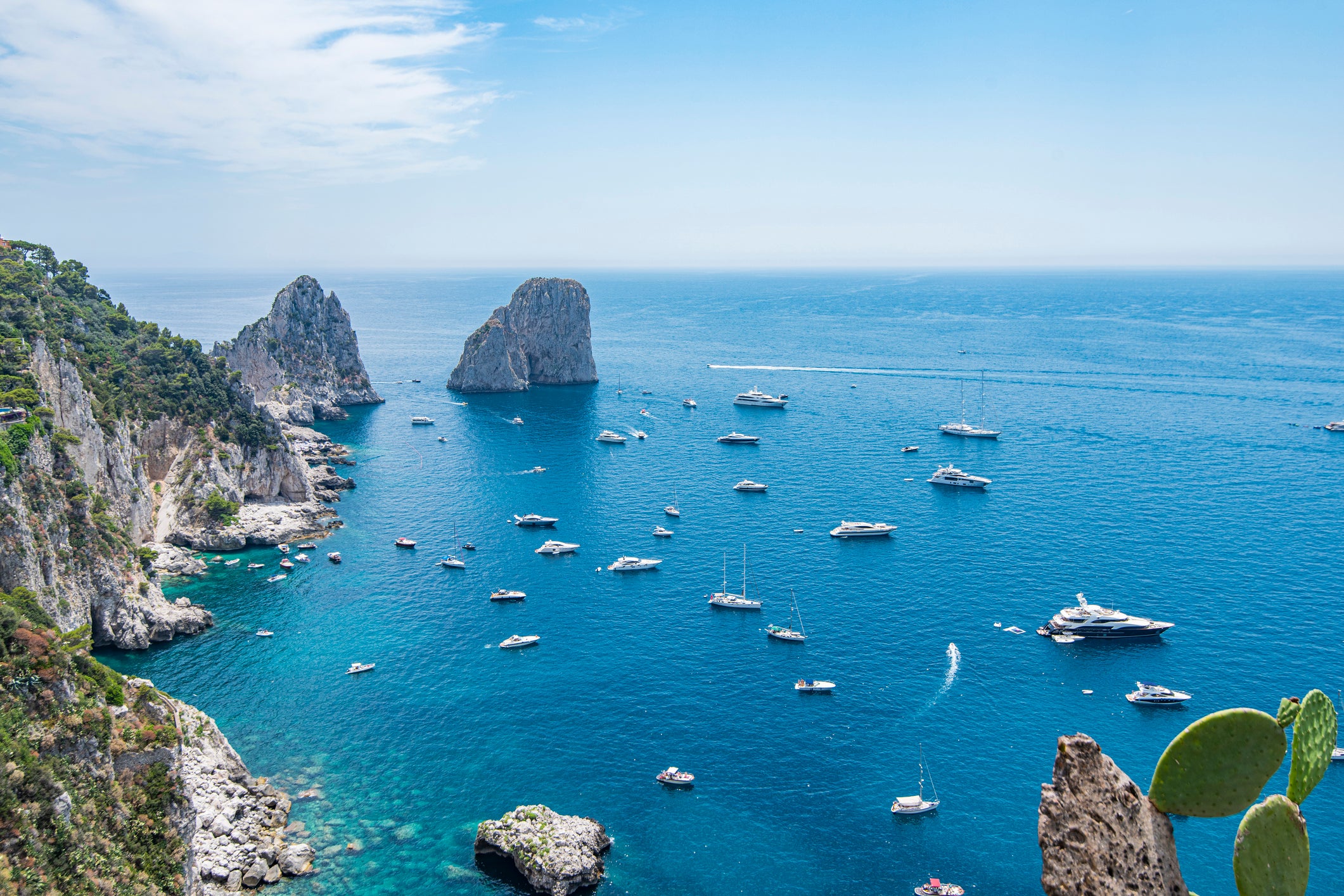
Read more: Barcelona for Valencia and other holiday swaps to make to avoid the crowds
Italy
In September, Italy proposed increasing its tourist tax to €25 a night for holidaymakers staying in its most expensive hotel rooms.
The Italian government is considering the €25 (£21) tax – currently between €1 and €5 per night in cities such as Venice – to make tourists “more responsible” and help financially disadvantaged areas fund services like refuse collections.
Venice
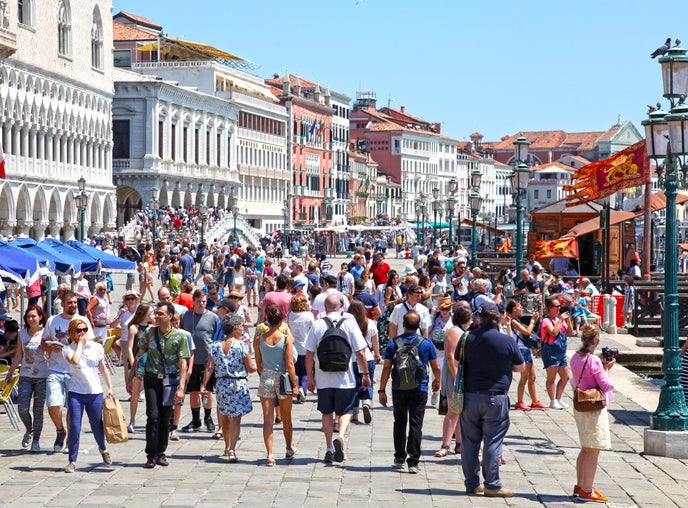
Venice heeded Unesco warnings of “irreversible damage” to its historic centre and introduced an entry fee for daytrippers between 8.30am and 4pm in spring and summer 2024. Day-tripping tourists incurred a €5 (£4.30) charge and were subject to a ticketing system as part of plans to tackle overtourism in the popular canal city flooded with 30 million visitors annually.
A new pilot system will start on 18 April 2025 and run until 27 July, and the fee will apply to Fridays as well as weekends and holidays for a total of 54 days.
Tourists who do not make reservations in advance will pay 10 euros instead of the usual five.
The tax followed the Italian city’s decision to ban cruise ships from the centre in 2019 after an incident where a cruise liner hit a dock. The canal city has also introduced new rules banning the use of loudspeakers and limiting tour group sizes to no more than 25 people.
Portofino
In Portofino, tourists lingering in viral Instagram spots to take selfies could be fined €275 (£242) for creating a dangerous situation. Implemented red zones or “no waiting” areas are intended to prevent traffic jams and congested pavements in the picturesque Italian Riviera town during peak season – April to October. Mayor of Portofino Matteo Viacava said tourists pausing to take pictures cause “anarchic chaos” and added in a statement to The Times: “The objective is not to make the place more exclusive but to allow everyone to enjoy our beauty.”
Capri
The island of Capri proposed a barrier of buoys to stop boats from sailing too close to shore and prevent damage to its cove-filled coastline. Plans for a perimeter of 40 buoys 100m offshore for 3.7 miles around the Italian island’s western coast were put forward by the local council in July 2024. The mayor of Anacapri, Franco Cerrotta, said that the barrier would also protect children in swimming areas from dangerous encounters with boats.
Rome
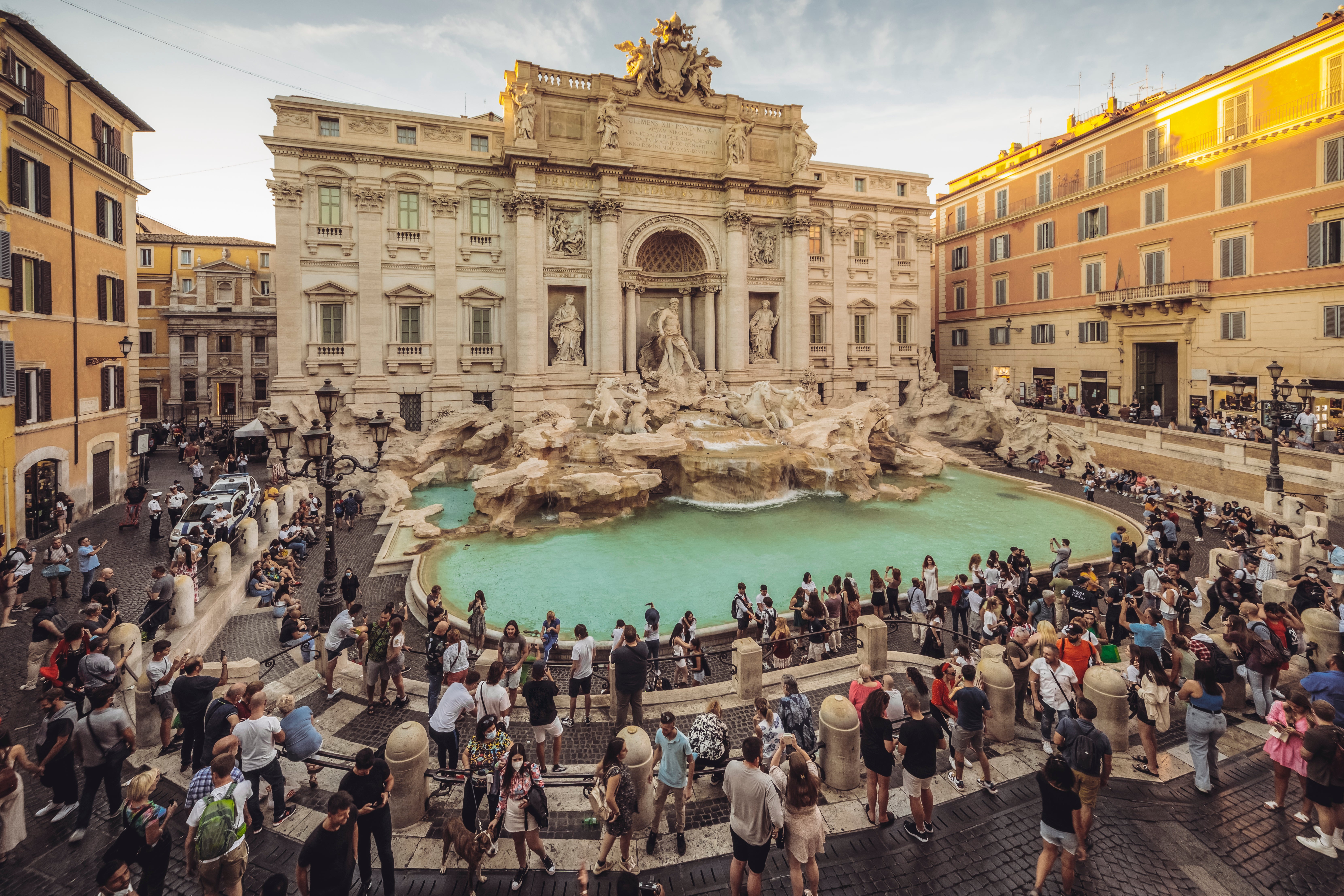
Visitors to Rome may face severe fines or even bans at attractions in a crackdown on out-of-line tourist behaviour in the Italian capital. Since 2019 men are no longer allowed to go shirtless in public, “love padlocks” are forbidden from being attached to bridges and those caught snacking on messy foods around busy tourist attractions (specifically the Trevi Fountain), could also be fined. The regulations may also incur a warning from police patrolling attractions.
Sardinia
Travellers to Sardinia are warned against wandering on the inviting pink sands of Spiaggia Rosa at risk of a fine ranging from €500 (£428) up to €3,500 (£2,993). A stricter enforcement of the Budelli Island beach ban, first introduced over 30 years ago, stems from concerns that tourism poses a danger to the pink micro-organisms that live on the shore. In 2022, visitor numbers on five Sardinian beaches were capped at 60 and €3 per person, per day visitor fees were implemented in a bid to protect the island’s shores from litter.
Florence
Last June, Florence banned the use of Airbnb and short-term private holiday rentals in its historic city centre. The Unesco World Heritage Site is home to around 11,000 short-term private rental properties, and housing stock in the area has depleted the availability of affordable housing for full-time residents.
In September 2024, Mayor Sara Funaro’s cabinet also approved a 10-point plan that, among other things, would ban key boxes on buildings in Florence’s historic center as well as the use of loudspeakers by tour guides, a statement from City Hall said.
Trentino Alto Adige
Rules limiting the number of overnight guests in Trentino Alto Adige made it more difficult for holidaymakers to find accommodation in the Italian region’s areas of natural beauty in 2023 including a famed glacial lake, Lago di Braies. The number of visitors staying in the area is capped at 2019 levels in an effort to combat overtourism, top attractions including the Alpe di Siusi will require pre-registration and no new guest houses are permitted to open.
Greece
Athens
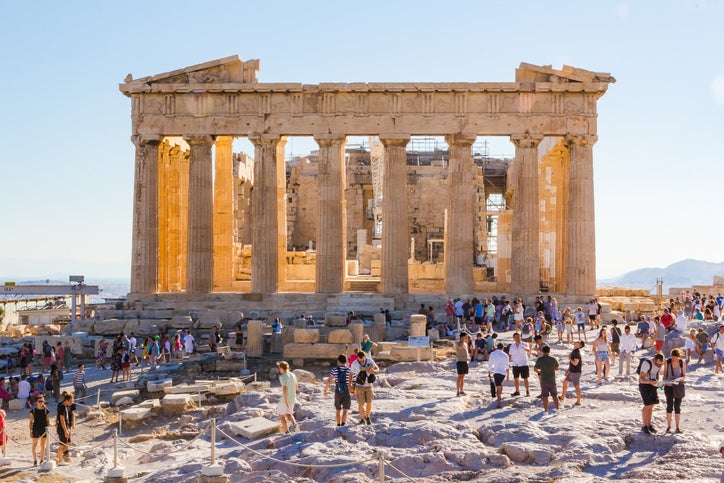
The famed Greek Acropolis capped visitor numbers at 20,000 in September 2023 to reduce footfall at the ancient monument. Visitors will also have to book a time slot in advance with caps changing from hour to hour between 8am and 8pm. The Greek culture minister, Lina Mendoni said: “The measure will address the need to protect the monument, which is the main thing for us, as well as [improving] visitors’ experience of the site.”
Santorini & Mykonos
Greece is set to reduce the number of cruise ships that can call at islands, including Santorini and Mykonos, in a bid to tackle the impact of overtourism. The new measures would be introduced to cap cruise liners and reduce the footfall of thousands of passengers on the “clearly suffering” Cycladic Islands. Limiting the availability of berths and anchoring slots could alleviate the growing pressure on Greek ports, and a bidding process would reportedly be implemented for vessels to secure the slots.
In September, Prime Minister Kyriakos Mitsotakis said Greece plans to impose a 20-euro levy on cruise ship visitors to the islands during the peak summer season.
The Greek government also plans to ban building in the caldera zone of Santorini as concerns continue to grow about infrastructure development in the region.
Hallstatt, Austria
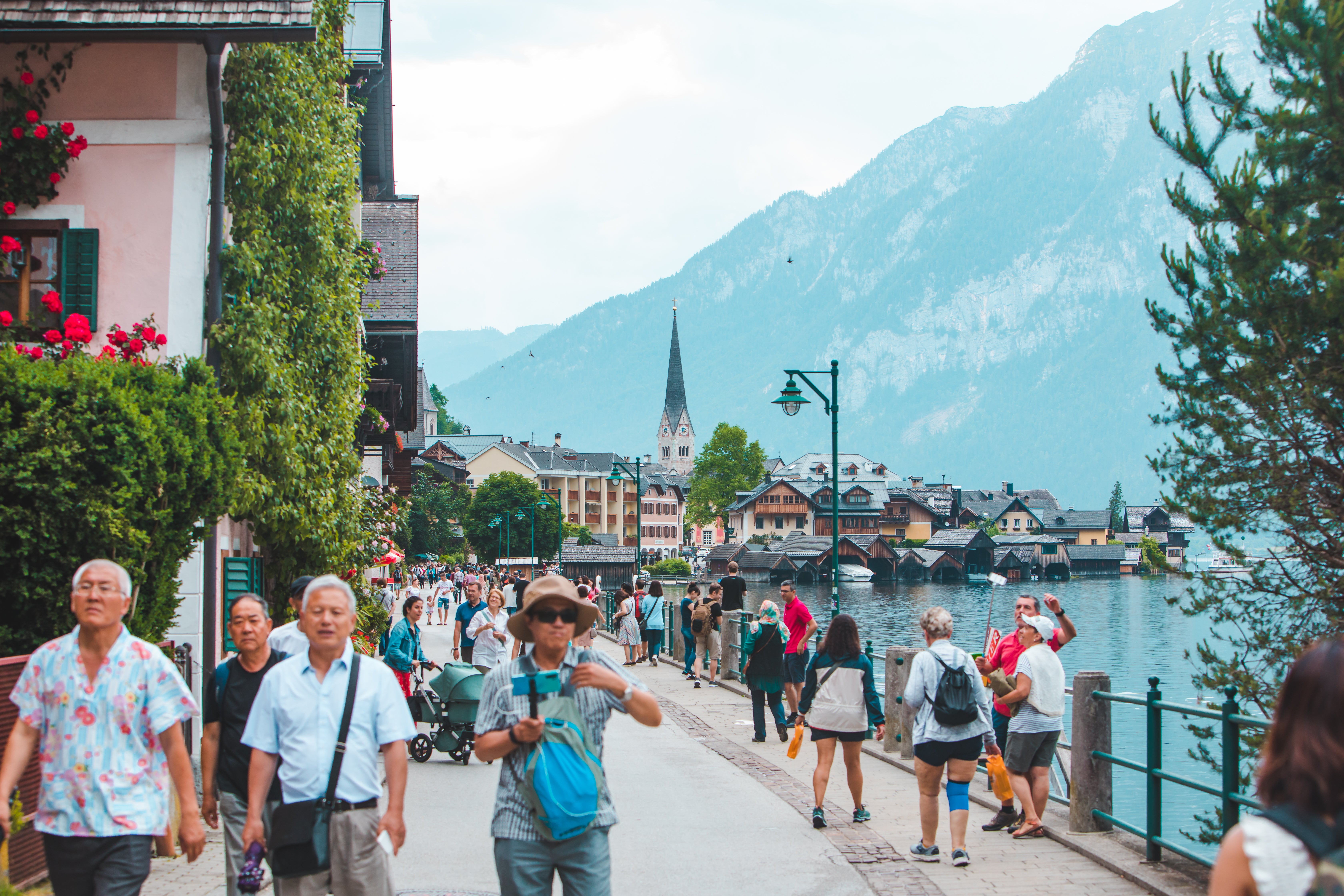
The Austrian town said to have inspired Frozen’s Arendelle, Hallstatt, took measures to deter tourists from visiting the fairytale spot by constructing wooden fences that obstruct lakeside views of the area that make for a popular selfie backdrop. Pre-pandemic, foot traffic to the protected Unesco site was averaging 10,000 visitors a day prompting Alexander Scheutz, Hallstatt’s mayor, to cap the number of tour buses and cars allowed to enter the area with the intention of “reduce tourism numbers by at least a third.” Locals also took to the streets in October 2023 to protest overtourism with signs that read “tourism yes – mass tourism no”.
Galapagos Islands, Ecuador
Tourism in the Galapagos is tightly controlled with strict regulations on land and sea enforced by the Galapagos National Park Service. These include walking only on marked trails, visiting protected areas with a specialized guide only and not visiting the islands’ main natural beauty spots on privately owned yachts. As of 1 August 2024, all tourists visiting the archipelago must also pay an increased entry tax – $200 (£155) for international visitors and $100 (£78) for visitors from Bolivia, Colombia, Peru, Argentina, Brazil, Paraguay and Uruguay.
Boracay, Philippines
In 2018, Boracay, a popular tourist island in the Philippines, was closed for six months after the country’s president declared the once-white sand beaches “cesspools”. Sewage problems from hotels and restaurants accommodating the tourism industry threatened to take the environment of the idyllic island past the point of no return.
Maya Beach, Thailand
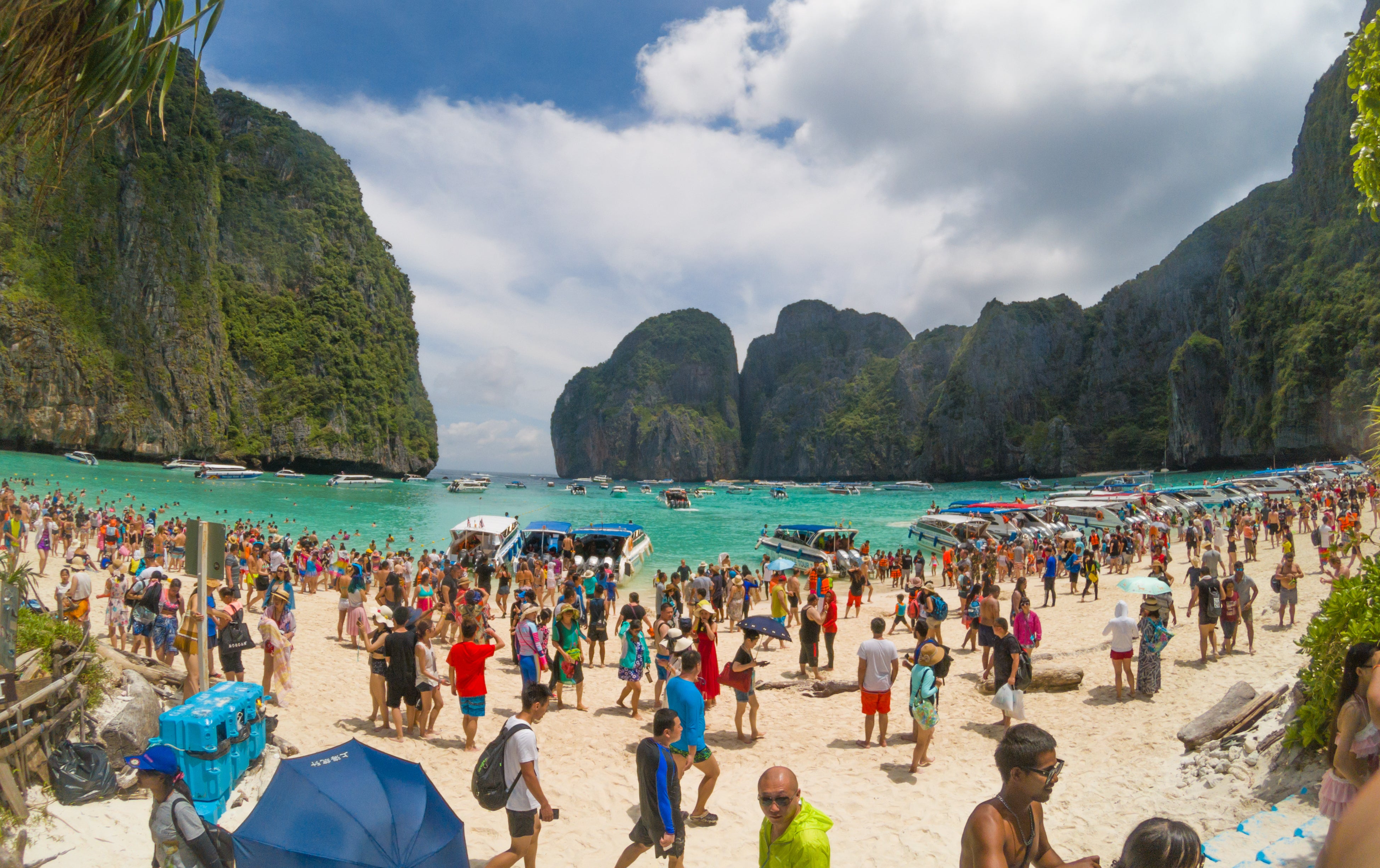
Famous as the setting for the Hollywood blockbuster The Beach, Maya Bay in Ko Phi Phi Leh, Thailand, was closed in the summer of 2018 to restore the natural landscape, ecosystems and coral reefs overwhelmed by 5,000 tourists a day. The beach reopened in January 2022 and again on 1 October 2024 after a two-month closure but swimming in the bay remains banned to protect the restored coral and black-tipped reef shark population. Visitors are also only allowed to visit for an hour and motorboats are banned from the bay itself.
Penang, Malaysia
Penang became the first destination in Southeast Asia to ban short-term rental platforms such as Airbnb holiday homes in June 2023 as a result of the behaviour of international tourists negatively impacting local residents. Under the regulations, only commercial properties are now able to host guests on a short-term basis – this is subject to registration fees and a 75 per cent approval from the other residents in the host’s building.
Bali, Indonesia
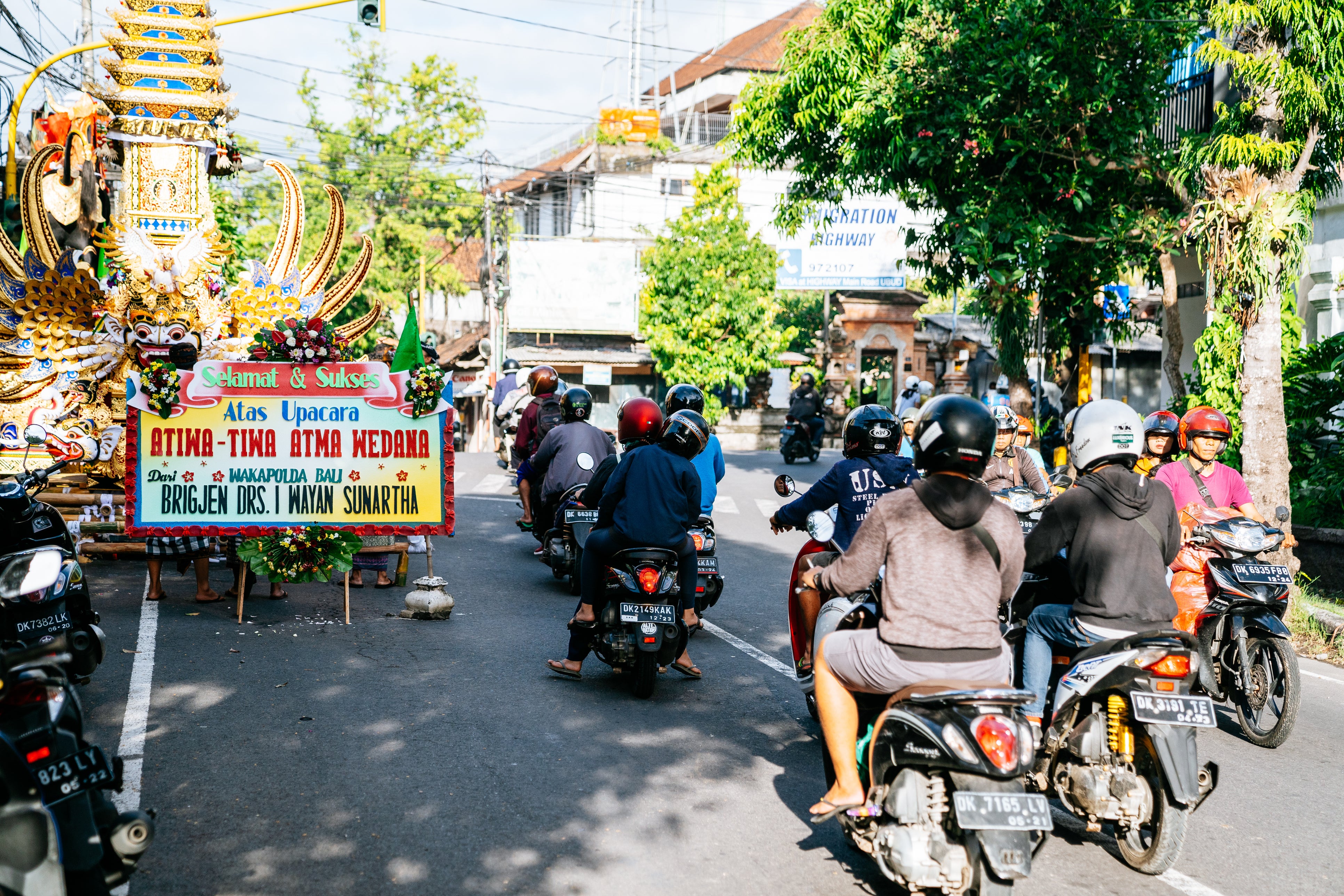
In February 2024, Indonesian tourism giant Bali introduced a $10 (£7.70) tourist tax to discourage unruly tourists from visiting the “low-cost” island. Visitors will be forced to pay the 150,000 rupiah levy before they can enter the popular backpacking destination, plus a tourist handbook outlining acceptable behaviour could also be distributed to travellers as part of further measures by the Bali Tourism Board.
Japan
Okinawa
The “Galapagos of the East”, Okinawa in Japan introduced a cap on visitor numbers to combat overtourism and protected an endangered species of indigenous wild cat, the Iriomote cat. As of April 2023, a maximum of 1,200 tourists a day will be able to travel to the Iriomote island of the Okinawa prefecture in a bid to preserve the ecosystem and the quality of life for permanent residents.
Ginzan Onsen
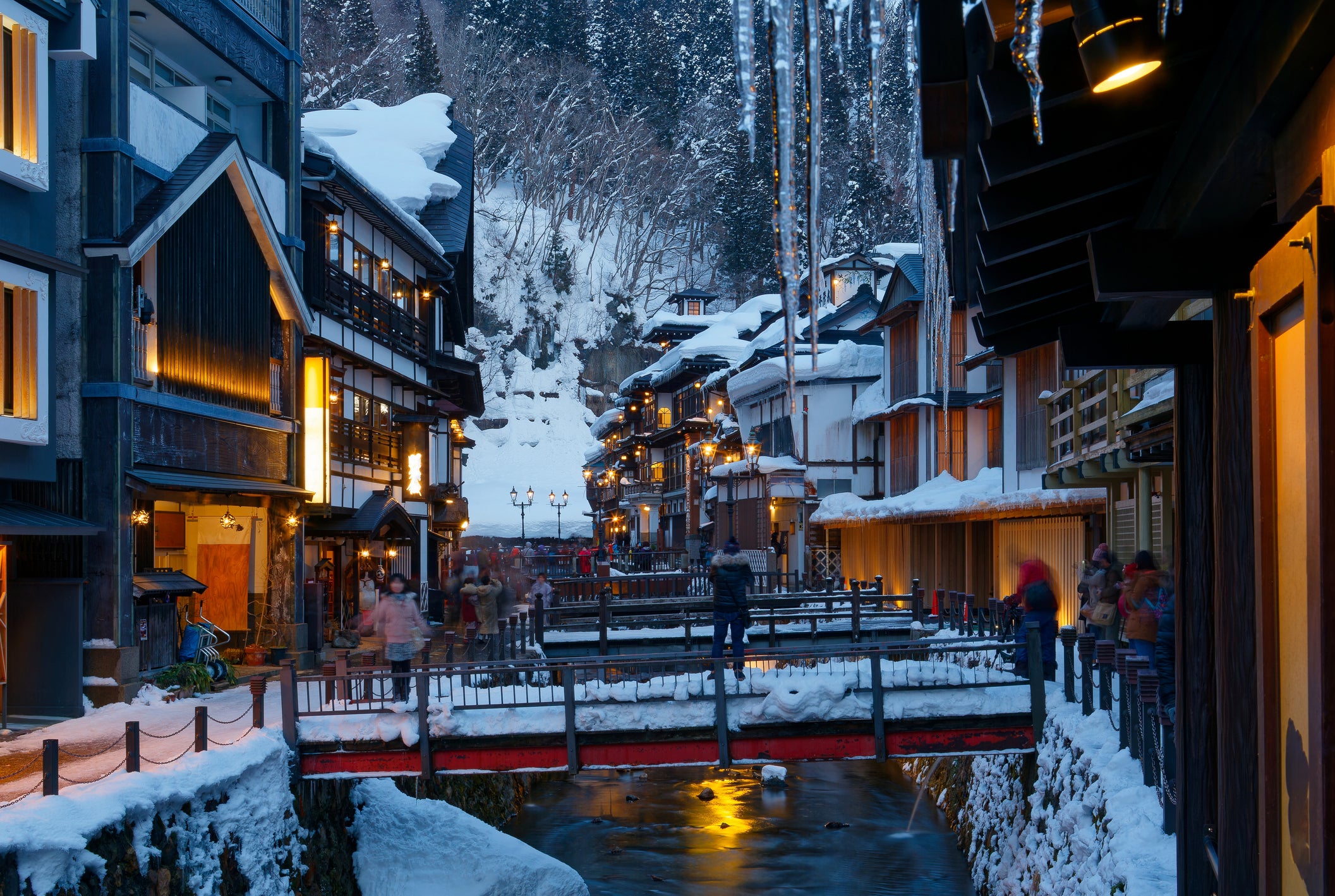
From 7 January 2025, the Ginzan Onsen Association is imposing strict rules limiting the number of daytrippers during peak hours. The rules will remain in place until the end of March.
There will be no restrictions on tourists between 9am and 4pm. But between 5pm and 8pm, only 100 day trippers will be allowed in the town, as long as they have a confirmed ticket or a reservation to enter Ginzan Onsen, which can be purchased in advance on the town’s website.
Kyoto
Kyoto in Japan is significantly raising accommodation tax by spring 2026 in an attempt to curb overtourism by reducing visitor numbers.
The city plans to raise lodging tax for hotels and other accommodations to a maximum of 10,000 Japanese yen (£52) per person per night – nearly 10 times the current cap of 1,000 yen (£5.20).
South Korea
Seoul’s historic Bukchon Hanok Village has an impending curfew policy aimed at mitigating overtourism in the area.
The curfew, set to be officially launched in March, will limit tourist access to specific areas of Bukchon from 5pm to 10am.
Amsterdam, the Netherlands
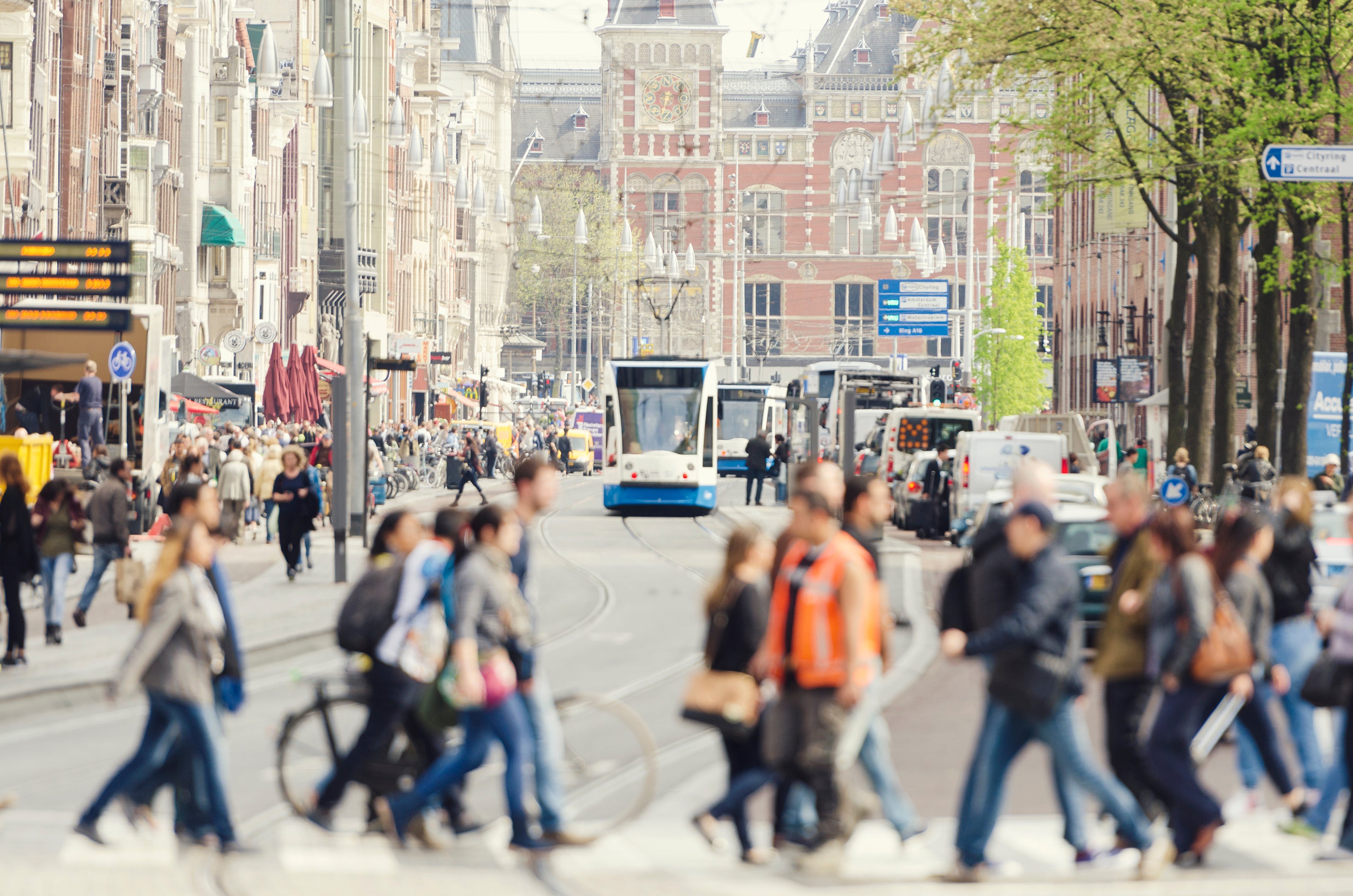
The latest measures of Amsterdam’s campaign against overtourism – a limit on the number of river cruises that enter the Dutch capital’s waterways and plans to reduce overnight visitors by banning the construction of new hotels. The proposals to restrict the way tourists enter and stay in the city predict 271,000 fewer visitors per year via river cruise and aim to limit overnight stays to just 20 million tourists annually.
Ocean-going cruise ships were banned from docking in the city centre in July 2023 and Brits were urged to “stay away” by authorities in Amsterdam due to complaints of antisocial behaviour during stag parties and pub crawls. The Dutch capital’s campaign in March 2023 targeted search engine keywords including “stag party Amsterdam” and “pub crawl Amsterdam” when entered by British internet users; a warning video consequently popped up.
Spain
Barcelona

Barcelona increased its municipal tourist tax from €5.25 to €6.75 per night in April 2024 for guests staying in a five-star hotel, with the sum paid to Barcelona’s Generalitat and the City Council. The surcharge is on top of the general nightly tourist tax (now €3.50) paid to the region and, as a result, means that five-star hotel guests will pay €47.25 (£41) per seven-night stay on top of their hotel room rate.
In October 2023, the Spanish city cut the number of cruise ships able to dock at its central port at any one time from 10 to seven and recently the 116 bus route, one of the few to stop outside Parc Güell‘s main gates, was removed from tourist maps to deter holidaymakers from visiting in peak season.
The Catalan capital also pledged to eradicate short-term tourist rentals including Airbnbs by the end of the decade and introduce strict new measures to restrict souvenir shopping and displays in “bad taste”.
Seville
Holidaymakers visiting Seville will soon be charged to enter the historic Plaza de España under new plans to tackle overtourism in the southern Spanish city. Most of the details including the exact charge and ticketing system are currently unclear, but Sevillian citizens will be exempt from the charge.
Mallorca
A string of anti-tourism protests stormed Mallorca this summer. In March and July 2024, more than 10,000 people marched through Palma, chanting, “Let’s save Mallorca” and on 1 June, residents were called to protest by setting up on the Spanish island’s beaches by the social media group Mallorca Platja Tour.
Protesters demonstrating on the streets of Palma de Mallorca say that the marches against overtourism will continue until the Balearic government introduces measures to counter the housing emergency on the island.
Menorca
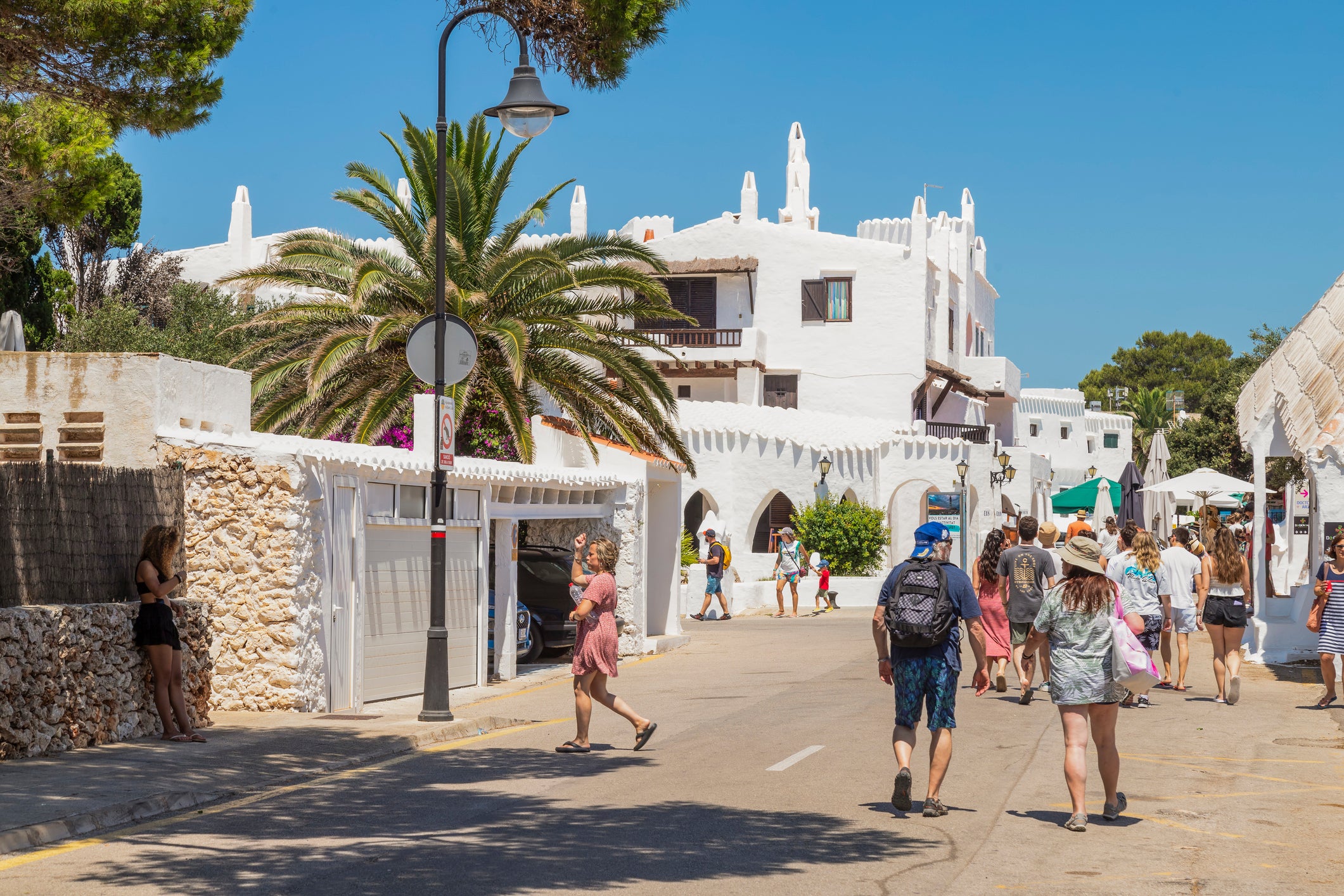
The 195 homeowners in Menorcan village Binibeca Vell have put up ropes and chains with keep-out imagery to stop a parade of tourists from crossing the line into private properties. Tourists were also asked to only stop off in Binibeca between the hours of 11am and 8pm to reduce noise and respect residents.
Ibiza
Authorities in Ibiza have implemented new regulations for cruise ships docking at their ports.
The Council of Mayors announced plans to limit the simultaneous arrival of cruise ships to the Spanish island in September by allowing no more than two cruises to dock at the same time.
French Polynesia
The pristine Pacific islands of French Polynesia plan to cap annual tourist numbers in a sustainability push. Local cruise lines with up to 700 passengers will take priority over international cruise ships and the cap will not exceed 280,000 visitors a year – equivalent to one tourist per local.
France
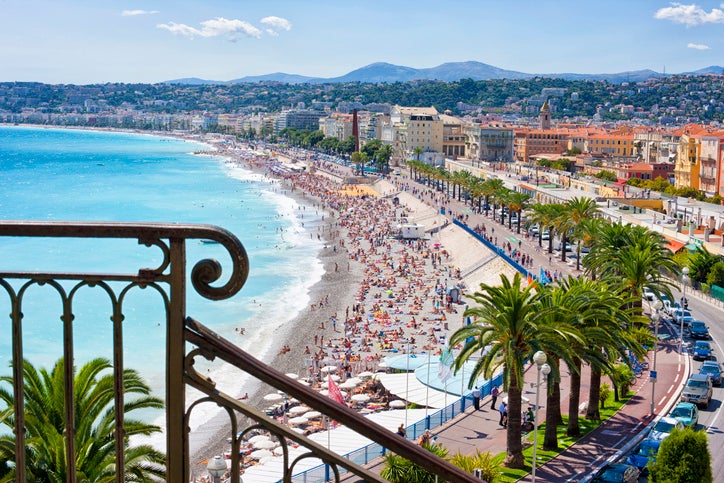
French tourism minister, Olivia Gregoire presented a roadmap to combat overtourism by regulating tourism flows and supporting local authorities experiencing visitor surges. Iconic French attractions such as the Mont-Saint-Michel abbey in Normandy and the Louvre Museum previously risked being overwhelmed by the volume of visitors.
Marseille
In November, the mayor of Marseille announced a ban on key safes mounted outside holiday lets in the latest crackdown on seasonal rentals in the city.
City hall agents will be permitted to dismantle the now illegal lock boxes with angle grinders if hosts do not heed warnings to remove the self-check-in service.
Mayor Benoît Payan wrote on social media: “The people of Marseille can’t take it anymore and we’re taking action.
“Stop seasonal rentals invading Marseille!”
Machu Picchu, Peru
In 2019, the bucket-list Unesco site Machu Picchu introduced a strict ticketing system and time slots to tackle overtourism. Visitors must now arrive within a specific time slot with a four-hour time limit for each visit and a set closing time of 5.30pm. Previous rules already outlined that visitors were only able to enter Machu Picchu with an official tour guide, group sizes were limited to 16 people and defined routes had to be followed around the site.
UK
Cornwall
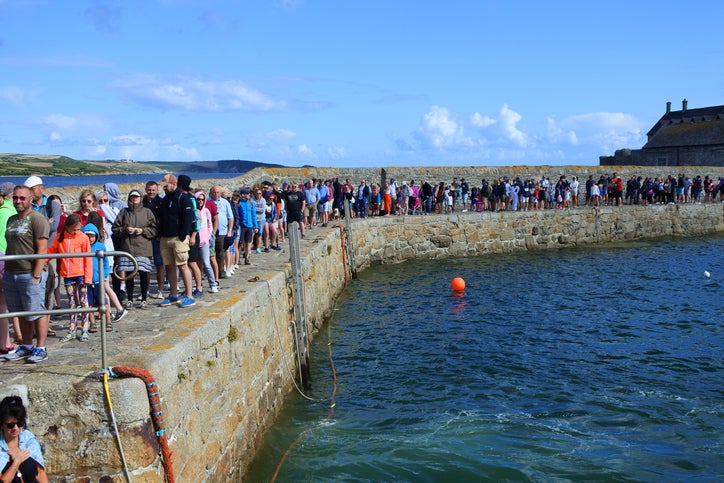
Cornish holiday lets are facing a compulsory registration proposal to combat overtourism during peak periods. Short-term rental platforms such as Airbnb and Vrbo have created an influx of additional holiday accommodation properties, adding to the already growing housing crisis in Cornwall. In March 2023, the government also proposed a £160m crackdown on “problematic” behaviour, including in short-term holiday lets.
Wales
A bill has been proposed by Welsh lawmakers to introduce a “small” visitor levy that could see visitors to the country paying up to £1.25 per night by 2027.
Finance secretary Mark Drakeford introduced the bill on 25 November for consideration by the Senedd, the Welsh Parliament, who will scrutinise and vote on the legislation.
Edinburgh, Scotland
.jpeg)
Edinburgh is set to introduce a tourist tax on accommodation in a bid to raise up to £50 million a year towards improving the city.
If agreed, from 24 July 2026, guests in the Scottish capital will have to pay a five per cent visitor levy to stay overnight.
The city’s council approved the ‘Transient Visitor Levy’ proposal in August to charge visitors at hotels, B&Bs, campsites and holiday rentals let out through Airbnb five per cent of the cost per room per night.
Yorkshire Dales
Authorities in the Yorkshire Dales have proposed a plan to ban the building of second and holiday homes in its villages to uplift rural communities and counteract overtourism.
The authorities have set a target of developing new housing within the national park, however, the plan states that all new housing should be permanently occupied rather than used as a second home or a holiday let.
Dubrovnik, Croatia
A “Respect the City” campaign in Dubrovnik introduced new measures for visitors to the Unesco World Heritage city, including bans on walking around in swimwear, driving without special permission, eating and drinking around cultural monuments and climbing on the city walls. All offences are punishable by fines and criminal charges. Visitors to Dubrovnik must also pay €2.65 (£2.25) per person, per night from April to September.
O’ahu, Hawaii
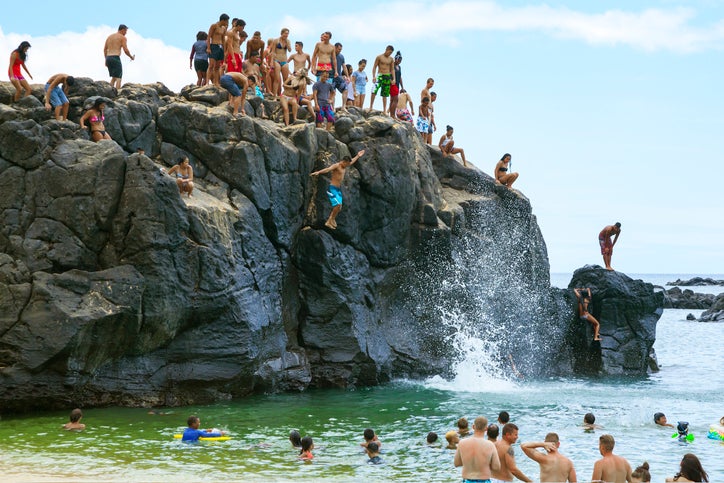
Hawaii is cracking down on visitor numbers to take care of its unique natural environment, repair coral reefs and maintain state parks and trails. A $25 (£20) “green” tourist fee is being considered in the state that would require tourists to pay when checking into hotels or short-term rentals. Democratic Gov. Josh Green said: “We get between nine and 10 million visitors a year [but] we only have 1.4 million people living here. Those 10 million travellers should be helping us sustain our environment.”
Bhutan, The Himalayas
Since the country opened to tourism in 1974, visitors to Bhutan must pay a ‘Sustainable Development Fee’, now US$100 (£80) per day – the world’s most expensive entrance fee – to restrict footfall on the landlocked Himalayan nation and encourage “high value, low impact” tourism. The tourism tax was halved from $200 in September 2023 for travellers who opt to visit, a $35 increase from the $65 pre-pandemic charge.
Sintra, Portugal
For years, summer tourism to Sintra’s Unesco world heritage site has threatened to overwhelm residents, with congested traffic preventing locals from running everyday errands in the town centre. Local association QSintra says that traffic and disrespectful tourists have made Sintra, to the west of Lisbon, a “congested amusement park” and are calling on the council to take action.
Prague, Czechia

A district council in Prague has proposed that outrageous costumes worn by stag and hen party groups be banned to tackle overtourism and reduce the toll of nightlife on locals in the city. The suggested ‘silly costume’ ban intends to address noise pollution and unruly tourist behaviour in the area’s nightlife scene.
Pub crawls in Prague have also been banned at night by city councillors aiming to attract “more cultured” tourists to the Czech capital.
The city’s deputy mayor, Zdenek Hrib, said in October that all drinking tours organised by tourism providers between 10pm and 6am could no longer operate.
Read more: Mallorca is going all out to repel tourists – but I won’t stop holidaying there



 Africana55 Radio
Africana55 Radio 
